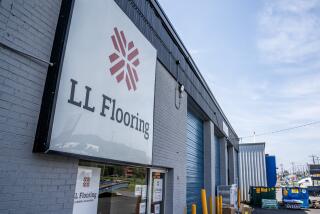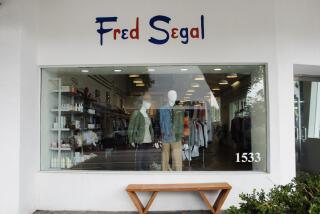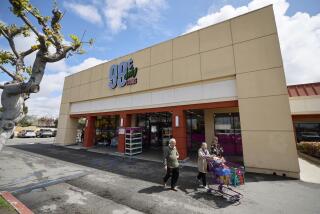Hawaiian Merchant Finds Rough Surf on Mainland
HONOLULU — Four years after launching a major expansion outside the islands, Hawaii-themed retailer Hilo Hattie has pulled back, eliminating half its mainland stores after learning demographic lessons about selling tropical merchandise outside its home market.
Although Hilo Hattie stores in Southern California and Las Vegas have fared well, other mainland outlets have struggled.
In April, Hilo Hattie closed its second-largest store, a 23,000-square-foot mall anchor in Tempe, Ariz., a year after closing its Nashville store.
The cuts leave Hilo Hattie with three mainland locations, but the company said it better understood its demographic needs outside Hawaii and remained interested in opening additional mainland stores.
Hilo Hattie’s mainland experience highlights the risks associated with a strategy embraced by local retailers such as Crazy Shirts, ABC Stores, Honolua Surf Co., Cinnamon Girl and Endangered Species.
Paul deVille, president and chief executive of Hilo Hattie parent Pomare Ltd., said the mainland pullback was started after he and a new management team took over three years ago and entered lengthy negotiations with malls to terminate leases at the underperforming stores.
Various factors, including cold-weather seasons and customer mix, contributed to lower-than-expected sales.
“The demographic was wrong,” DeVille said. “For us, it was a must-fix” situation.
Hilo Hattie opened its first mainland location in Orange County, a 20,000-square-foot store at the Block at Orange mall in 1998. The store, which is two-thirds as big as the company’s flagship store in Honolulu, was a hit.
Hilo Hattie launched its big mainland push in 2000, eventually opening mall stores in Nashville, Tempe, Miami, Orlando, Fla., and Las Vegas.
The strategy was part of a plan to help ensure strong sales during times of flat tourism in Hawaii, where Hilo Hattie has nine stores.
Led by then-CEO Chris Resich, Hilo Hattie more than doubled annual sales from about $30 million to $70 million in the five years through 2000.
But DeVille, who succeeded Resich in April 2001, said sales were disappointing at several mainland stores.
Cold weather in Nashville at Opry Mills and in Tempe at Arizona Mills put a chill on sales of aloha shirts and other items. The two giant Mills Corp. malls, which mix entertainment and specialty retail with factory outlet stores, also provided an awkward fit, DeVille said.
“We didn’t see our customer there,” he said. “We don’t mark up to mark down, or discount the heck out of our merchandise. To be successful we have to have a visitor destination, warm climates year-round and lots of visitor traffic. When we have these ... we have successful operations.”
In Miami at the Dolphin Mall, which is not a Mills center but is a value shopping-entertainment complex, Hilo Hattie ran into similar difficulties in drawing the right customers, DeVille said, and closed the store.
Another Florida store, at the Festival Bay center in Orlando, was reduced by DeVille’s team from a planned 25,000 square feet to 6,000 square feet before opening last year, and it does fine at the smaller size, the company said.
DeVille said stores in California and in Las Vegas at the Aladdin hotel-casino’s Desert Passage shops do well because of high visitor traffic and resident shoppers who embrace elements of a tropical lifestyle.
The most popular Hilo Hattie items sold on the mainland are aloha shirts, home furnishings and food items, which are also popular with large numbers of Hawaii expatriates, DeVille said.
He said the company would focus further expansion on Southern California and Las Vegas, as well as places in Hawaii such as Waikiki, Waikoloa on the Big Island and Poipu on Kauai.
Retail consultant Stephany Sofos said refocusing closer to home would be a smart move for Hilo Hattie. Capitalizing on the popularity of the aloha shirt and other tropical lifestyle goods has often proved difficult for the relatively small Hawaii company, which faces bigger competitors such as Tommy Bahama, Federated Department Stores Inc.’s Macy’s and others more recognized on the mainland.
“It’s a tough problem,” she said. “In a big picture, you have to go where your primary market is, and that’s Hawaii and the West Coast.”
More to Read
Inside the business of entertainment
The Wide Shot brings you news, analysis and insights on everything from streaming wars to production — and what it all means for the future.
You may occasionally receive promotional content from the Los Angeles Times.










